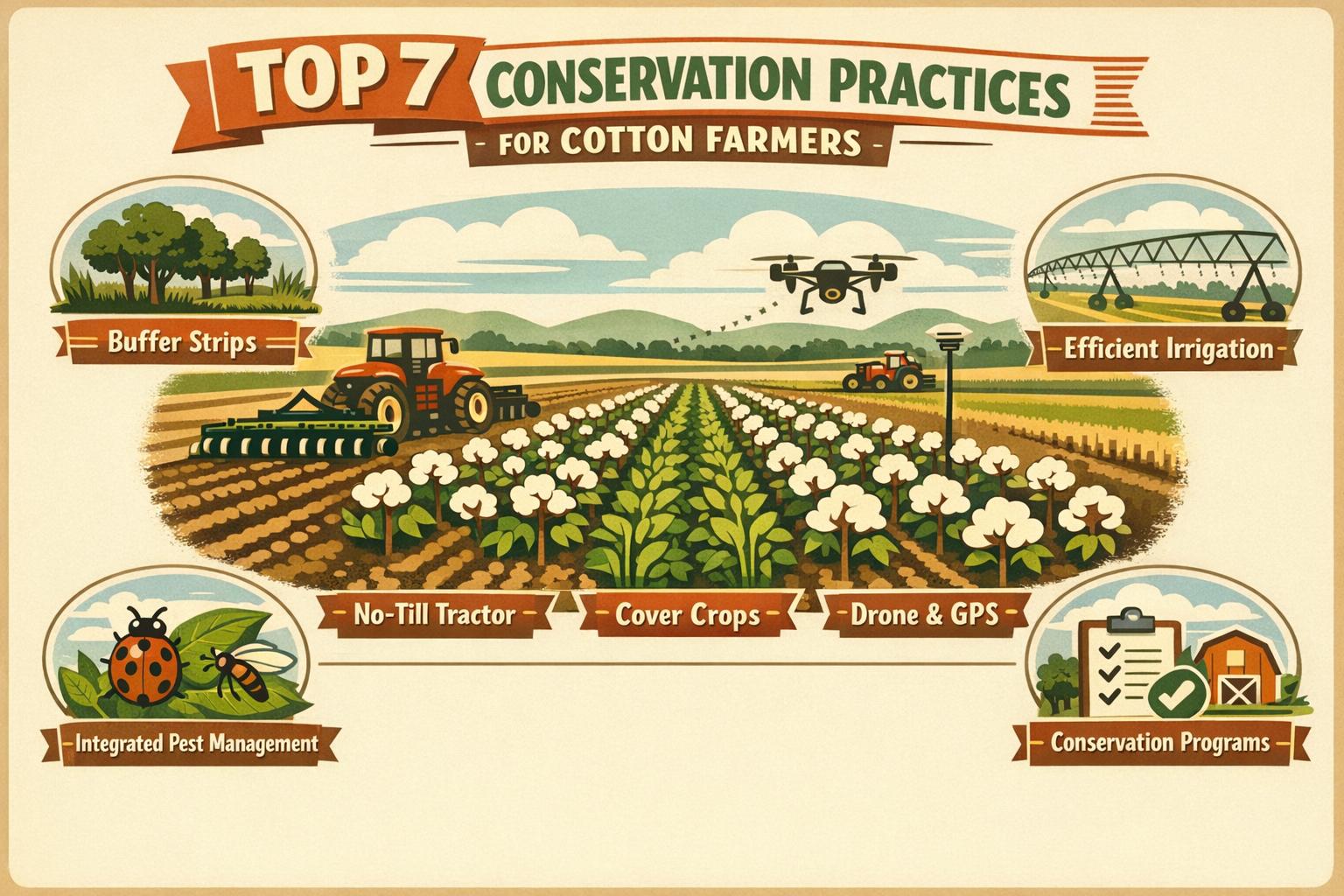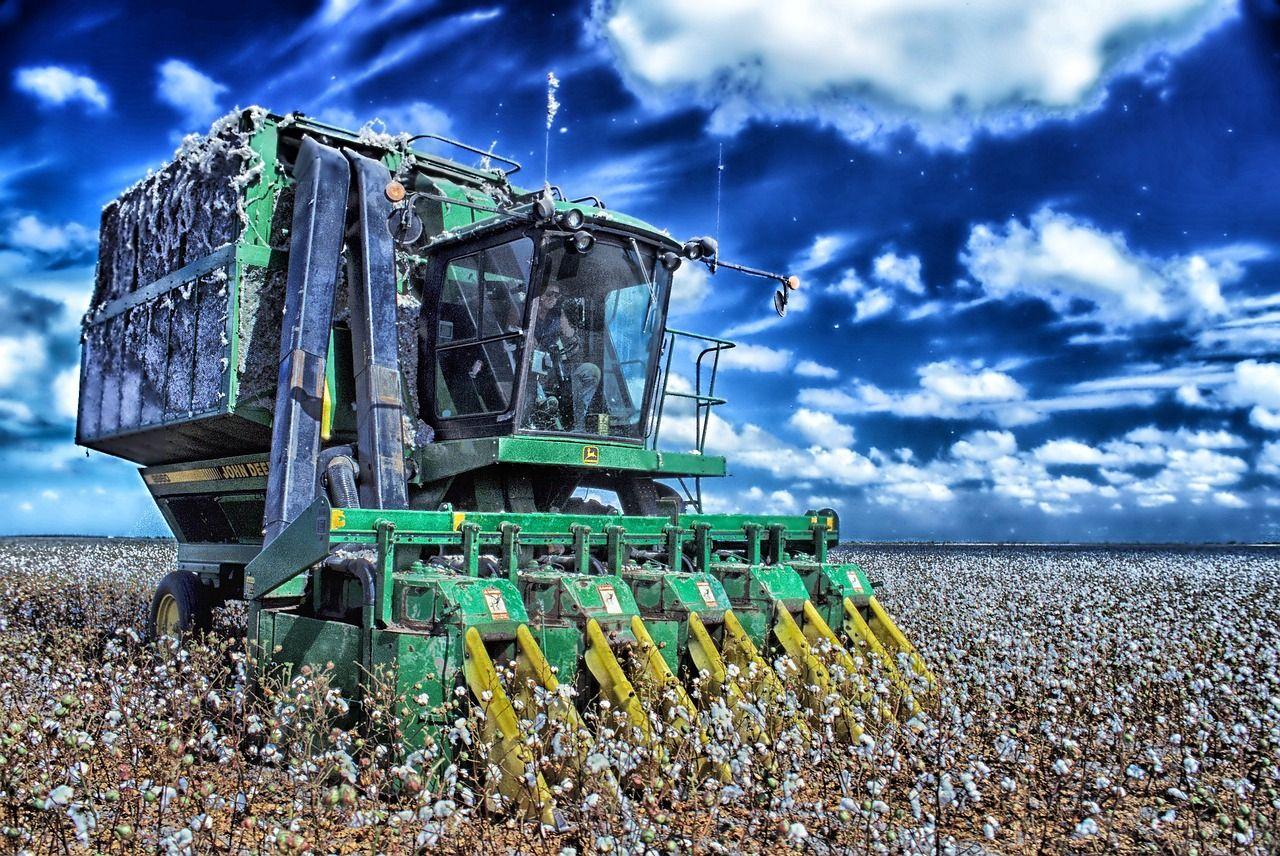Weeds pose one of the most persistent challenges in cotton production, competing with crops for essential resources like water, nutrients, and sunlight. Left unchecked, they can reduce yields by up to 50 percent or more, depending on infestation levels and environmental conditions. For cotton farmers aiming to maximize productivity and maintain field health, implementing effective weed control strategies is crucial. This comprehensive guide explores proven methods, from cultural practices to integrated approaches, helping you develop a tailored plan that minimizes losses while promoting sustainable farming. By focusing on prevention, early intervention, and balanced techniques, growers can achieve cleaner fields, higher-quality harvests, and improved profitability. Whether you're managing large-scale operations in the Cotton Belt or smaller plots, these strategies draw on established agronomic principles to keep your cotton thriving.
Understanding the Impact of Weeds on Cotton Crops
Weeds not only rob cotton plants of vital resources but also harbor pests and diseases, complicate harvesting, and degrade fiber quality. Common culprits in cotton fields include pigweed, morning glory, johnsongrass, and nutsedge, each with unique growth habits that make them tough to eradicate. Pigweed, for instance, can produce thousands of seeds per plant, leading to rapid spread if not addressed early. In regions with warm, humid climates, these invasives thrive, outcompeting young cotton seedlings during the critical establishment phase.
The economic toll is significant: Studies show that heavy weed pressure can slash lint yields, increase input costs for additional passes with equipment, and necessitate higher herbicide applications. Moreover, weeds like Palmer amaranth have developed resistance to common chemicals, forcing farmers to adopt multifaceted strategies. Recognizing weed types through scouting—walking fields weekly during early growth—is the first step. Use tools like weed identification apps or extension service guides to pinpoint species and assess density. Thresholds vary, but generally, intervene when weeds cover 10-20 percent of the field or reach 4-6 inches in height to prevent seed set.
Cultural Practices: Building a Foundation for Weed Prevention
Cultural methods form the backbone of sustainable weed control, emphasizing proactive field management to create unfavorable conditions for weeds. Start with crop rotation: Alternating cotton with non-host crops like soybeans or corn disrupts weed life cycles, reducing populations by 30-50 percent over time. In continuous cotton systems, incorporate cover crops such as rye or clover during off-seasons to smother emerging weeds and improve soil structure.
Planting density plays a key role—opt for narrower rows (30-36 inches) and higher seeding rates (around 40,000-60,000 plants per acre) to promote quick canopy closure, shading out weeds. Timely planting when soil temperatures reach optimal levels ensures vigorous cotton growth, giving it a competitive edge. Soil tillage, when used judiciously, can bury weed seeds deeper than germination depth; however, minimize excessive tilling to preserve soil health and prevent erosion.
Fertility management is another cultural pillar. Balanced nutrient applications based on soil tests avoid over-fertilizing, which can favor weed growth. For example, excessive nitrogen may boost grassy weeds like barnyardgrass. Integrate these practices into your overall farm plan for long-term benefits, as they reduce reliance on chemicals and enhance biodiversity.
Mechanical and Physical Weed Control Techniques
For farmers seeking non-chemical options or dealing with resistant weeds, mechanical methods offer reliable control. Cultivation with tools like rotary hoes or inter-row cultivators disrupts small weeds (under 2 inches) without harming established cotton. Perform shallow tillage early in the season, ideally when cotton is at the 4-6 leaf stage, to avoid root damage. Flame weeding, using propane burners to scorch weeds, is effective for organic systems but requires careful calibration to prevent crop injury.
Hand hoeing or rogueing remains viable for spot treatments in smaller fields or high-value areas. In larger operations, invest in precision equipment like camera-guided cultivators that target weeds between rows with minimal soil disturbance. Banding herbicides over the row while cultivating between them combines mechanical and chemical approaches for efficiency.
These techniques shine in integrated systems, where they complement other methods. Regular maintenance of equipment ensures clean fields, and timing is critical—act before weeds bolt to prevent seed production. While labor-intensive, mechanical control supports soil conservation and reduces herbicide resistance risks.
Chemical Herbicide Applications: Targeted and Responsible Use
Herbicides remain a cornerstone of weed management in conventional cotton farming, offering broad-spectrum control when applied correctly. Pre-emergence options like pendimethalin or fluometuron create a barrier in the soil, preventing weed germination for weeks after planting. Post-emergence herbicides, such as glyphosate or glufosinate in tolerant varieties, target emerged weeds without crop harm.
To combat resistance—now affecting over 50 weed species worldwide—rotate herbicide modes of action. For instance, alternate between Group 9 (glyphosate) and Group 27 (mesotrione) products across seasons. Tank mixes combining multiple actives enhance efficacy; a common blend might include dicamba for broadleaf control and s-metolachlor for grasses.
Application best practices include using calibrated sprayers with appropriate nozzles to minimize drift, applying during calm weather, and adhering to label rates. Buffer zones near waterways protect the environment. For sustainable use, scout post-application to evaluate effectiveness and adjust future plans. Over-reliance on chemicals can lead to superweeds, so integrate with cultural and mechanical methods for balanced control.
Integrated Weed Management (IWM): The Holistic Approach
The most effective strategy combines cultural, mechanical, and chemical tactics into an Integrated Weed Management (IWM) program. IWM emphasizes long-term prevention over reactive treatments, starting with field history mapping to identify problem areas. Use decision-support tools like university-developed models to predict weed emergence based on temperature and moisture.
A sample IWM plan might include:
- Pre-Planting: Soil sampling, rotation planning, and cover crop seeding.
- Planting: Herbicide-tolerant varieties, precise seeding, and pre-emergence applications.
- Early Season: Scouting, mechanical cultivation, and targeted post-emergence sprays.
- Mid-Season: Monitoring for escapes and spot treatments.
- Post-Harvest: Cleaning equipment to prevent seed spread and planting winter covers.
This approach can cut herbicide use by 20-40 percent while maintaining yields. Biotechnology advancements, like stacked-trait cotton varieties resistant to multiple herbicides, bolster IWM by expanding options. Collaborate with local extension agents for region-specific advice, as weed pressures vary from the arid Southwest to the humid Southeast.
Sustainability and Future-Proofing Your Weed Control
Sustainable weed control goes beyond immediate results, focusing on environmental stewardship and economic viability. Reduce chemical runoff by adopting precision agriculture technologies, such as GPS-guided applicators that apply herbicides only where needed, cutting usage by up to 30 percent. Promote beneficial insects and natural predators by maintaining field borders with native plants, which can suppress weed-hosting pests.
Organic farmers can leverage mulching with materials like straw to block light and moisture from weeds, or bioherbicides derived from natural compounds. Research into allelopathic crops—those that release weed-suppressing chemicals—offers promising avenues. Monitor for emerging resistances through annual seed bank assessments, and participate in community programs to share best practices.
Economically, effective weed control boosts returns by preserving yield potential and reducing rework costs. Invest in education: Attend workshops or online courses to stay ahead of evolving challenges. By prioritizing sustainability, cotton farmers contribute to healthier ecosystems, ensuring the crop's viability for generations.
Common Weed Control Challenges and Solutions
Every field presents unique hurdles. In drought-prone areas, weeds may outcompete stressed cotton; counter this with drought-tolerant varieties and efficient irrigation. Heavy clay soils can harbor perennial weeds like nutsedge—use repeated shallow cultivations and specific herbicides like halosulfuron.
Resistance management requires vigilance: Diversify tactics and avoid monoculture. If infestations overwhelm, consider fallowing fields temporarily to deplete seed banks. Budgeting for weed control—typically 5-10 percent of production costs—ensures proactive measures pay off.
In conclusion, mastering weed control in cotton farming demands a blend of knowledge, tools, and adaptability. By implementing these strategies, growers can safeguard their crops, enhance sustainability, and secure better outcomes. For more insights on cotton production, explore our guides on state cotton histories or supply chain dynamics. What weed challenges do you face in your fields?


